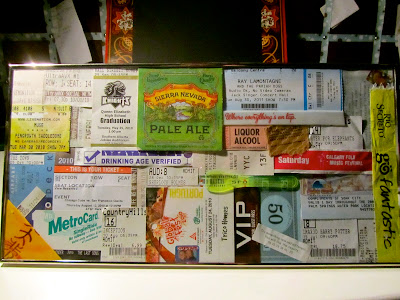It's that time of year again when we start preparing for winter; canning all the remaining summer fruits, bringing in our herbs from outside, and strapping on our winter tires. For us Canadians, the preparation is as much an emotional journey as it is a practical one. Don't be fooled by this generous and beautiful autumn season we've been enjoying; winter
is coming.
As someone who thrives on the smell of rain and feeling of sunshine, I find the cold months often put a damper on my level of happiness. I don't like it when my feet are wet, I don't like waking up in the dark, and I especially don't like that last windy day of fall that knocks all the remaining leaves off the trees. Photosynthesis is a happiness.
In an attempt to hold on to a piece of summer, I'll share today my experience in creating an indoor
terrarium. This project is something simple enough for anyone to try, and welcomes itself to all kinds of creativity. Terrarium design truly is limited only by your imagination.
 Supplies:
Supplies:
- container of your choosing
- rocks / pebbles
- charcoal
- soil
- moss
- plants
- decorative elements (twigs, figurines)
- spray water bottle
There are two types of terrariums; open-air terrariums and closed terrariums. Since I've opted to make use of tropical plants in this design, my terrarium has a lid and will exist as a closed ecosystem. Open environments are better suited for
succulent plants which thrive on drier living conditions.
Before choosing your plants however, it's important to consider what type of container you'll be working with. I've chosen a 1-gallon apothecary jar for my project, but there are
countless examples to choose from. If working on a budget, a little resourcefulness can go a long way. Mason jars, fish bowls, and flasks are examples of items that can typically be found around the house and work just as well in creating a happy plant environment.
When deciding what to fill your terrarium with, it's best to choose plants that grow slowly and will be satisfied with whatever amount of sunlight available. I chose a mosaic plant for this project. This plant grows slowly, requires indirect sunlight, and adds some colour to the terrarium with it's red leaves. For some inspiration and other plant ideas, see these
top terrarium plant picks.
Once your supplies have been collected, it's time to get terrariun'!
First, place the pebbles and stones at the base of the container. These will allow for drainage and water management beneath the soil.
A layer of charcoal goes in next, which will assist in keeping the water clean. If you've chosen to create an open terrarium for succulent plants, this step isn't as crucial.

Mosses are another great addition to your terrarium as they retain moisture and provide an aesthetic touch. Moss will also promote drainage by preventing your soil from falling into pebbles/stones at the base of your terrarium. Once your charcoal is in, add a thin layer of
spaghnum moss before adding your potting soil.
Prepare and insert your plants by shaking off any excess soil and by loosening the roots. Once you've got the plant where you want it in the container, carefully surround and cover the roots in potting soil. You'll want to allow for at least 2-3 inches of soil in your container, so remember to be liberal when putting down your dirt.
If you've chosen to theme your terrarium, it's time to add all the unicorn or wizard figurines you've been anxiously holding on to. I decided to add a little
stegosaurus figurine to mine; I can hear him roaring from in between the reindeer moss and twigs I've added.
Caring for your terrarium should be even easier than creating it was! Closed style terrariums require little watering, as the moisture circulates within the container itself. This ecosystem is not too unlike our own, in which water evaporates into the atmosphere and then falls back down again as rain. Open style terrariums will need to be watered more frequently, but not too heavily.
And there you have it! You should be left now with an terrarium that will continue to thrive for years to come, and with any luck, remind you of days spent enjoying a warmer season.
For further examples and how-to's, check out
Twig Terrariums, and
Disabled World



.JPG)







